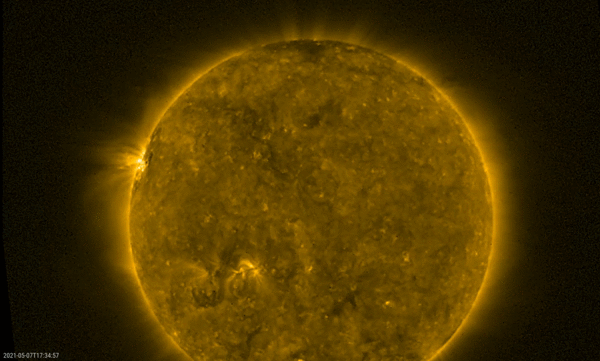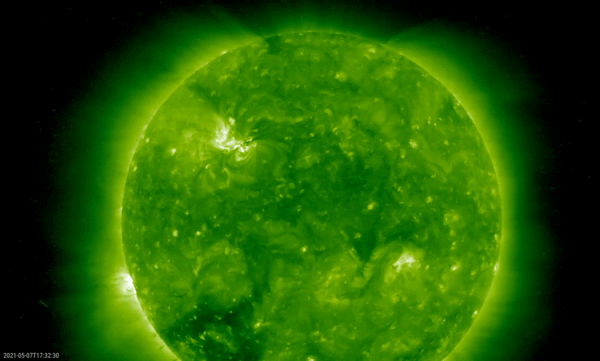NOAA 2822 was a compact heap of sunspots that had just rounded the Sun's east limb when it produced a M3.9 flare on 7 May. EUV (extreme ultraviolet) imagery showed that the flare was accompanied by coronal dimming (a temporary darkening in the solar corona, also known as "transient coronal hole") and an obvious coronal wave (see this STCE Newsitem for more info). Together with the observed radio bursts, these were all signs that a coronal mass ejection (CME) was associated with the flaring event. Further analysis indicated that this CME had no earth-dirtected component. Satellites such as PROBA2 had a sideview of the eruption, but STEREO-A, which is currently trailing the Earth by about 52 degrees, almost had a heads-on view and was able to image the flare-related features in a much clearer way. Movie clips PROBA2/SWAP and STEREO-A/EUVI 195 can be found underneath.


The M3.9 flare is the 4th M-class flare of the ongoing solar cycle (SC25). The strongest so far took place on 29 November 2020 (M4.4 beyond the northeast limb) - see the table underneath (Hem: solar hemisphere ; NOAA: group number). The top 10 of solar flares for the previous SC21, SC22, SC23 and SC24 are given in the links. The GOES scaling factor was not taken into account while compiling these tables, i.e. the data are presented as they are available at the relevant NOAA/SWPC websites. As SC25 further unfolds, stronger solar flares will be produced and so the table will gradually be populated by X-class flares, the strongest of which may happen even far into the solar cycle (September 2017 for SC24!). So please make sure to visit this webpage from time to time!






